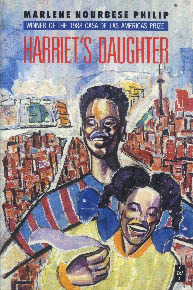I can't quite remember the last time I sat down and wrote a traditional conference paper (Powerpoint has totally changed the way I present). I took on too many conferences this semester, and now I have to retrench; when you're paying your own way and teaching two courses, you have to be realistic about what you can do—and do well. The paper I'm writing now is a little old; I first proposed it for a 2009 conference in Frankfurt, and it was accepted but I couldn't afford to go. Then I turned it into a blog post, and now I'm reworking it for a panel on African Canadian literature. And we all know what happens when I write about Canada…
But so far, the irrational rage is taking a back seat to actual statistics:
according to DiverseCity: The Greater Toronto Leadership Project, "only 4.8 per cent of editors, senior management and board members are visible minorities." (
Globe & Mail
)
If that's the state of affairs in the publishing industry (which is based in Toronto), then it's no big surprise that only ONE black-authored young adult novel was published in Canada in 2010. And why is that one novel set in Ghana and not in Canada? Perhaps because representing black people living IN Canada (not as fugitive slaves) would suggest that there ARE black people who belong in Canada:
"In popular parlance 'culture' in multiculturalism is code for 'non-western' and non-white, much in the same way that ethnicity or 'ethnics' typically refer to non-whites. The erroneous assumption is that new immigrants in Canada (mostly non-white) have culture or 'ethnicity' in contrast to the 'mainstream' or 'normal Canadians'. In this social construction, those belonging to non-western cultures are socially produced as not fully belonging to the nation, as not fully Canadian." (Tania Das Gupta,
FEDCAN blog
)
So in a way, to celebrate multiculturalism within children's publishing is to focus on people who are NOT Canadian, not fully here, not contributing members of the "mosaic nation." Even though (or perhaps because) the country's cities are rapidly changing:
"When Canada marks the 150th anniversary of Confederation in 2017,
one in five Canadians will be a racialised minority. And
projections show that by 2031, racialised minorities will make up 63 percent of Toronto's, 54 percent of Vancouver's and 31 percent of Montreal's population." (Malinda S. Smith,
FEDCAN blog
)


I'm not fully convinced that traditional scholarship can correct the problems I see in Canadian children's publishing, but it's good to lay things out and make it plain. I've got my notes, I've re-read the two novels I'm critiquing, I've got statistics and tables. Now I just have to sit down and write the darn thing…








 newest »
newest »
 newest »
newest »
 It's a good point, Edi, and I'll look into it. My guess is, I'd have to somehow get access to the sales records kept by bookstores--indies and the big chains. I know the big chain in Canada, Chapters/Indigo, won't carry any of Lee & Low's books...Scholastic and HarperCollins seem to do simultaneous releases in the US and Canada, so I don't know if those really count as Cdn or American books...sigh. The statistical side of things is HARD!
It's a good point, Edi, and I'll look into it. My guess is, I'd have to somehow get access to the sales records kept by bookstores--indies and the big chains. I know the big chain in Canada, Chapters/Indigo, won't carry any of Lee & Low's books...Scholastic and HarperCollins seem to do simultaneous releases in the US and Canada, so I don't know if those really count as Cdn or American books...sigh. The statistical side of things is HARD!














I'm wondering if there are any stats about books that are imported for children of color and how well they may or may not sell? Is there a large crossover of US books into Canada? If this demand could be documented it could show without a doubt how Canadian publishers are missing their own market.